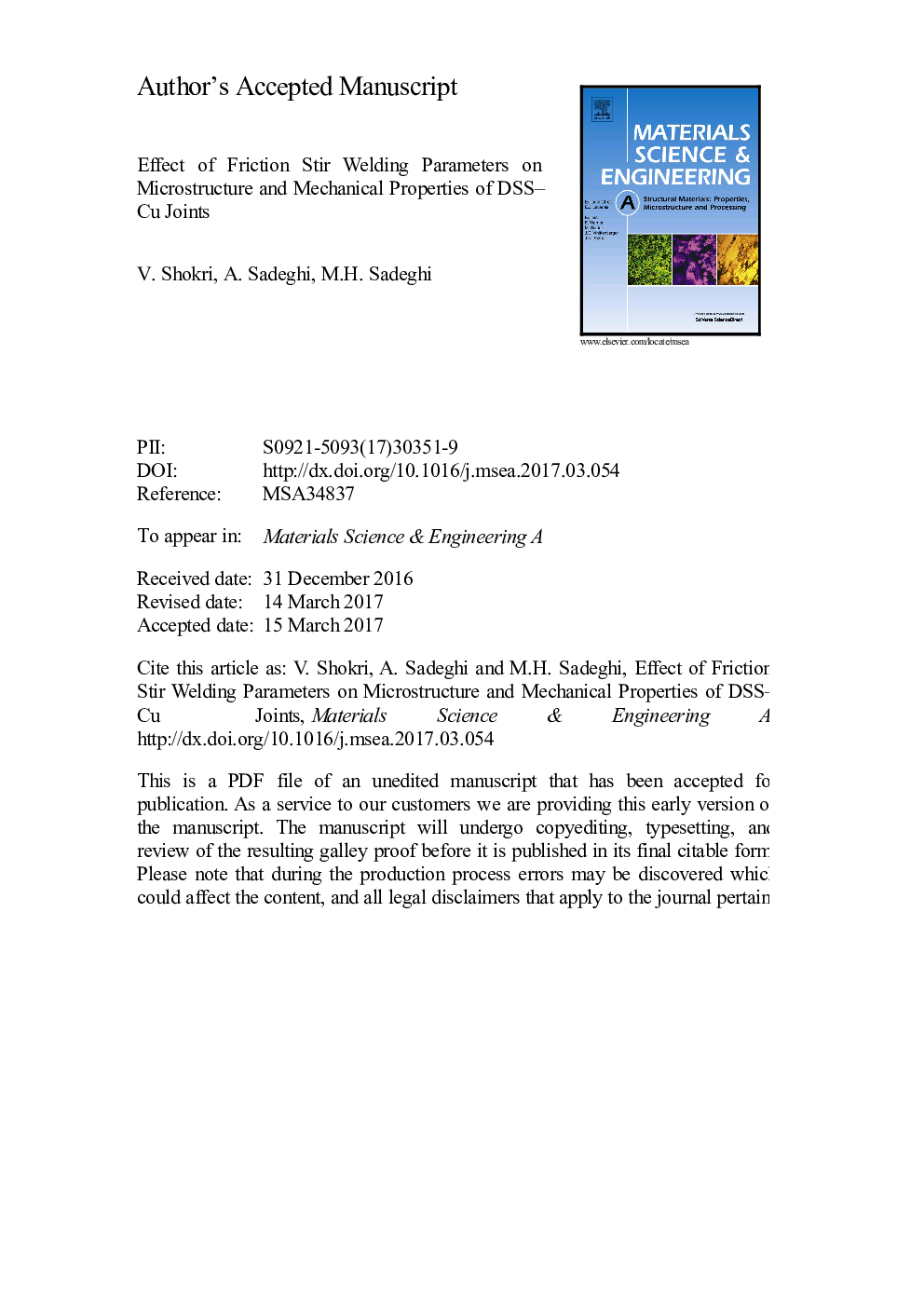| Article ID | Journal | Published Year | Pages | File Type |
|---|---|---|---|---|
| 5455875 | Materials Science and Engineering: A | 2017 | 27 Pages |
Abstract
Dissimilar joining of copper to duplex stainless steel (DSS) is challenging at high temperatures of fusion welding owing to the large difference in physical properties of the base metals. To reduce negative effects of welding at high temperatures, solid state welding at lower temperatures has been proposed. To study different effects of welding parameters (rotation speed, travel speed and tool offset) on weld zone microstructure and mechanical properties butt joints of a copper alloy and duplex stainless steel (DSS) were produced by friction stir welding (FSW). It has been found that heat input generated by the interaction of different welding conditions has a significant effect on the formation of a brittle intermetallic at the interface and eventually the final mechanical properties. At low heat inputs, mixing of the two sides is insufficient and metallurgical bonding is weak; while at high heat inputs, the thickness of the formed intermetallic is too thick which causes stress concentration at the interface and premature failure. An optimum welding condition was found (rotation speed of 1200Â rpm, travel speed of 30Â mm/min and tool offset of 0.5Â mm) which almost reached the mechanical properties of the Cu-alloy monolayer.
Related Topics
Physical Sciences and Engineering
Materials Science
Materials Science (General)
Authors
V. Shokri, A. Sadeghi, M.H. Sadeghi,
